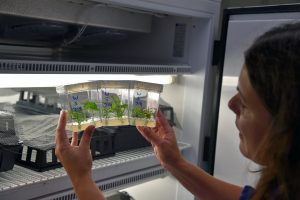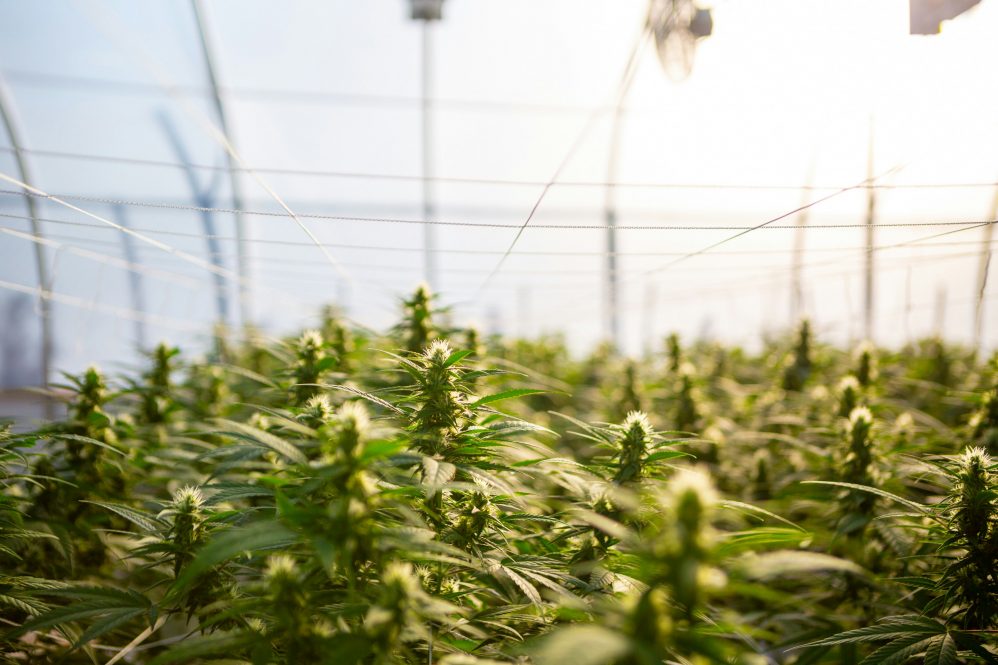Hemp is emerging as an unexpected remedy for one of the horticulture industry’s hidden environmental harms, thanks to research from horticulture professor Jessica Lubell-Brand.
For years, gardeners have relied on a particular soil additive to facilitate the growth of a wide variety of plants, from azaleas to blueberries: peat moss. It’s a common ingredient in bagged potting soil mixes, and easy to find at most garden and home supply stores.
“It’s really hard to beat all the good qualities of peat moss for growing plants,” Lubell-Brand says. “It holds water well, and it doesn’t decompose too quickly.”
But the environmental costs are high: “It takes many thousands of years for a peat bog to develop, and when it’s harvested, you can’t really replace it.”
What’s more, harvesting peat releases tons of carbon into the atmosphere and destroys peat bogs — ancient ecosystems which play a vital role in regulating Earth’s climate.

The peat industry is facing a dwindling supply, as well as potential new sale restrictions: many countries have passed or proposed legislation banning the sale of peat to garden consumers, owing to these environmental impacts. Currently, most peat sold in the United States is harvested from bogs in Canada, which is considering similar restrictions.
Lubell-Brand, who specializes in cannabis research, wondered if a fiber called hemp hurd could mimic the properties of peat moss which make it an attractive soil additive. Her research into this question is currently supported by a $161,414 Sustainable Agriculture Research and Education (SARE) grant.
Have you hurd?
Hurd is considered a byproduct of the hemp textile manufacturing process, in which the wispy outer fibers of the hemp stem are spun into cloth or rope. Inside the stem is a thick, woody core – the hurd – which is often discarded.
Lubell-Brand and her co-PI, Mark Brand (also a professor of horticulture), hypothesized that hurd’s similar particle size to peat moss could help it provide some of the same growing effects. They began conducting trials, working with graduate student Carla Caballero.
“The results have been pretty promising,” Lubell-Brand says. “With our studies with greenhouse crop petunia, we found that you can replace the peat up to 66% … and still produce a similar market-quality plant, in the same amount of time, with the same fertility.”
Repurposing hemp hurd in this way, Lubell-Brand points out, carries a double environmental benefit: it diverts a huge source of waste from the hemp industry, and it reduces the need for destructive peat harvesting.
Next, the research team will test hurd’s efficacy with other plants, such as shrubs and tomatoes. As part of the outreach component of this project, the team will also be producing short-form videos serving as “Reports from the Field,” spreading the good word of hurd to growers and other researchers.
The research team anticipates a highly positive response to the new material. In a pre-trial survey, they report, 100% of growers indicated that they “were extremely or strongly interested in research evaluating sustainable alternatives to peat” and that “the use of hemp hurd, a renewable resource, for plant production would be viewed favorably by the public.”
As the peat supply runs up against impending restrictions and the limits of the world’s dwindling supply, research like Lubell-Brand’s will be crucial to help the horticulture industry weather the oncoming storm.
“Some of the largest nurseries in the state – let’s say, a 500-acre outdoor container production nursery – utilize about 17,500 cubic yards of peat annually,” Lubell-Brand says. That’s over five Olympic swimming pools full of peat.



